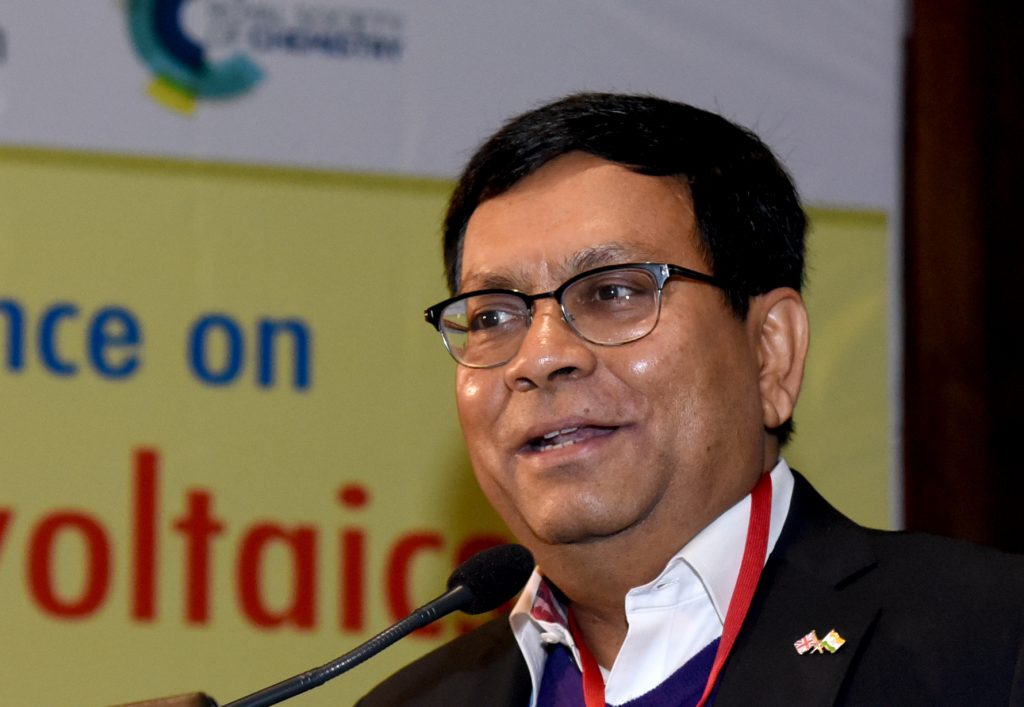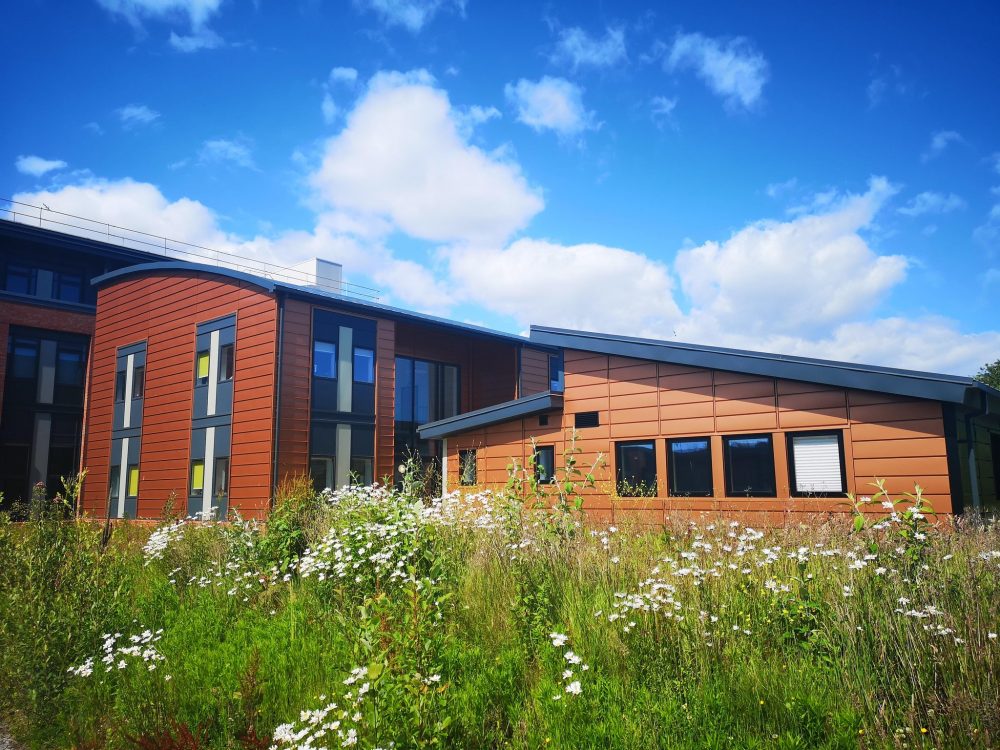This series of articles is a partnership between SPECIFIC, SUNRISE and the Active Building Centre. Our projects work with academic, industry and community partners in the UK and the Global South to research and develop solar technologies and to drive change in the construction industry.
While our projects each have distinct objectives and approaches, our shared message is simple: buildings don’t have to cost the Earth.
Our vision for transformation comes with many challenges across technical, political, social and economic norms. In this series we will share some of the work we’re doing to address each of these. This is the fourth blog, a Q&A with Arunavo Mukerjee on translating the ‘Active Building’ concept to India.

As we have seen in the previous blog, the Active Classroom is still performing well two years on, generating more energy than it needs. But what if we were to build something similar in India?
Arunavo Mukerjee, Vice President of Advisory Services at Tata Cleantech Capital (one of our key delivery partners) is perfectly positioned to answer questions on the topic of an ‘Active Building’ in India.
Why are ‘Active Buildings’ suited to India?
They are relevant to India because the projections in electricity usage show that there’s going to be a tremendous increase in the electricity consumption of buildings. This is because of an increased usage of ‘white goods’, especially air conditioners in offices, and other equipment like washing machines, dishwashers, and larger refrigerators in homes. So if you wanted to cater to the load, it would require the wires bringing electricity to the homes to all be replaced. Which would require digging up the streets and they would have to be practically rebuilt. So if you could build a supply at the point of consumption, that would minimise the changes required for low-voltage distribution.
What challenges would have to be faced to translate them from a UK to an Indian context?
In the UK the major energy consumer is heating, whereas in India it’s cooling. And especially in urban centres, our buildings are narrow, so it means that you have limited roof space to harvest the sun and produce solar energy. The power requirement for air conditioning is fairly significant, so it’s going to be quite a challenge to match the energy supply you get from solar panels on the roof. Also the roof is used for storage of materials thus there is an alternative economic use of the space. In Indian cities like Delhi, Mumbai, and Bengaluru it is equally expensive to rent storage space.
Why use building-integrated technologies?
Buildings in India are “bespoke” constructions where each building is practically hand made. There has hardly been any productivity improvement in the building construction industry. Thus manufactured building using steel would be a revolutionary step. This would also enable installation and integration of a variety of technologies encompassing both the supply and consumption side like thin-film solar PV panels, different types of air conditioning systems, heat pumps and other equipment in a controlled environment to obtain near design efficiencies of operation.
Are there any economic advantages to installing ‘active buildings’ in India?
In India the electricity tariff structure is inverted. Usually if you consume more you would expect to pay less. But in India, to help conservation of energy, it’s the other way around. So if you are at the lowest level of energy consumption, then what you pay per unit of electricity is much lower than if you are consuming more. Essentially if you have an air conditioner in your home, your cost of electricity would be around 10 rupees per unit, as compared to say 3-4 rupees (per unit) if you’re at the lower end of consumption. So if you could have some local source of generation, then you could reduce your overall consumption and you would get a cost benefit. And typically the cost of power generated by these rooftop solar panels in India is roughly around 5-6 rupees (per unit). In case of a commercial establishment like a hotel or retail mall, they pay around 12 rupees per unit and thus their savings are more!
What do you think the future for this type of building is? Are there any further applications, especially in India?
I think it’s an emerging technology, and as I explained previously, because the electricity consumption of buildings is going to increase by a couple of folds, it would make sense to generate power at the point of consumption. And that would help de-congest the electricity distribution network. Also such installations count towards the renewable power obligation (RPO) mandate of the electricity distribution companies (discoms) without making any capital investment in generating facilities.
There is also the additional aspect of electric vehicles. So currently in my house the electricity connection is about 3kw, and you actually need 3kw to charge an electric vehicle. So if I had an electric car and came back in the evening and plugged it in, then I would have to sit in the dark and wait for it to charge. So I think a built-in electric supply at the point of consumption could help. And also you don’t want to charge electric cars with fossil fuels, it’s better to charge them with green energy. So the active buildings would also help with that.
They’d also be useful not only for residential buildings but for commercial and industrial buildings. It would also be interesting to use not just rooftops but facades, because as I was saying buildings are typically quite narrow in India. So if you have a 20-story building but only a small roof it’s only going to supply part of the electricity demand. But if you augment it by having power generation on the sides of the buildings that would help.
Watch the video below for more information on how SUNRISE, SPECIFIC, and the Active Building Centre work together to show how buildings can be designed differently:
Read other blogs in this series with SPECIFIC and the Active Building Centre:
Blog #1: Public involvement with a community in India: Q&A with Carol Maddock and Khushboo Ahire
Blog #2: Designing Active Buildings
Blog #3: The Active Classroom: still providing insights and performing well
Blog #5: Active Buildings for Future Generations
Blog #6: Solar Heat Storage: Eliminating Gas Heating
Blog #7: How renewable energy can transform slum communities: Q&A with Dr Minna Sunikka-Blank

